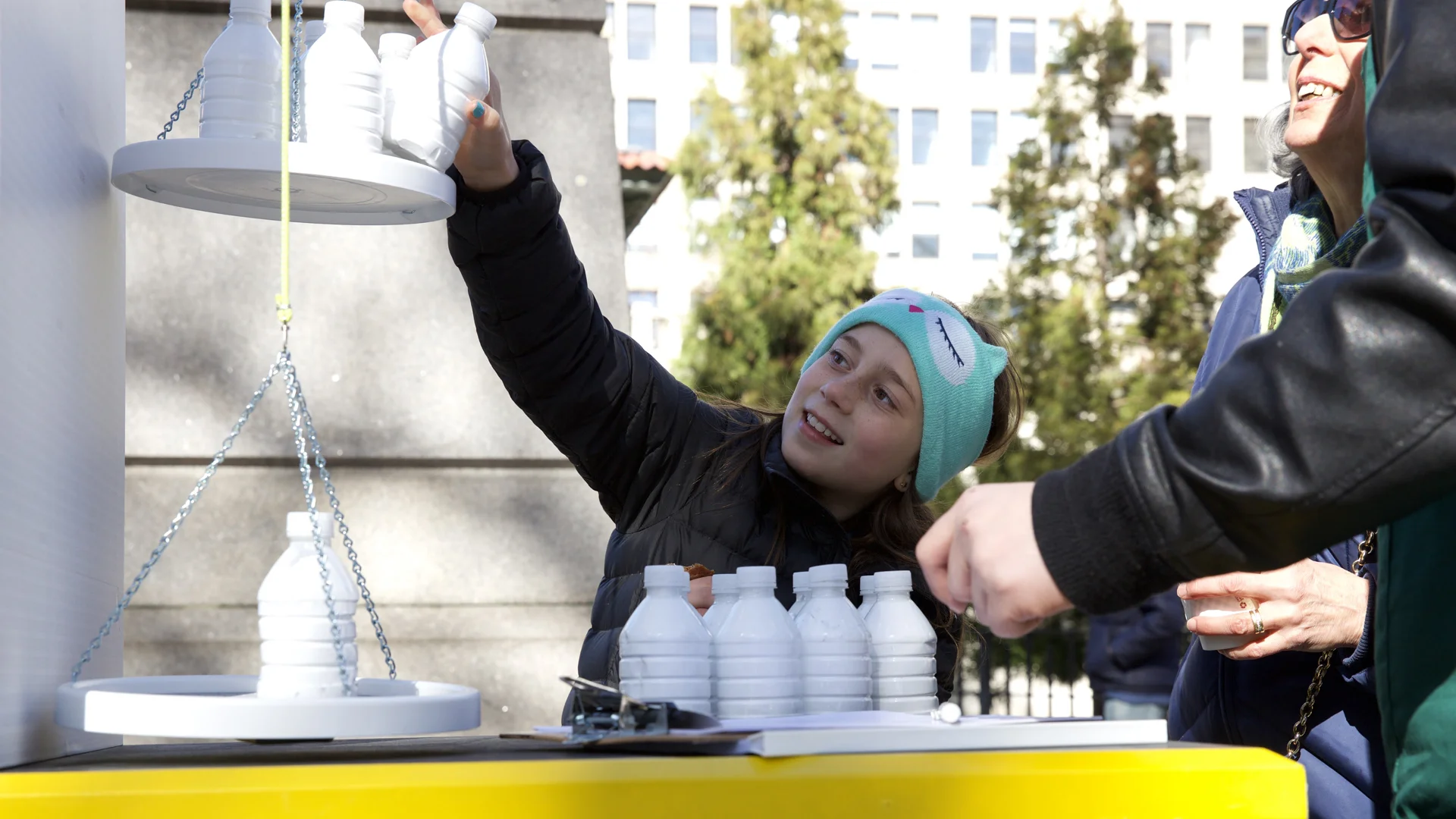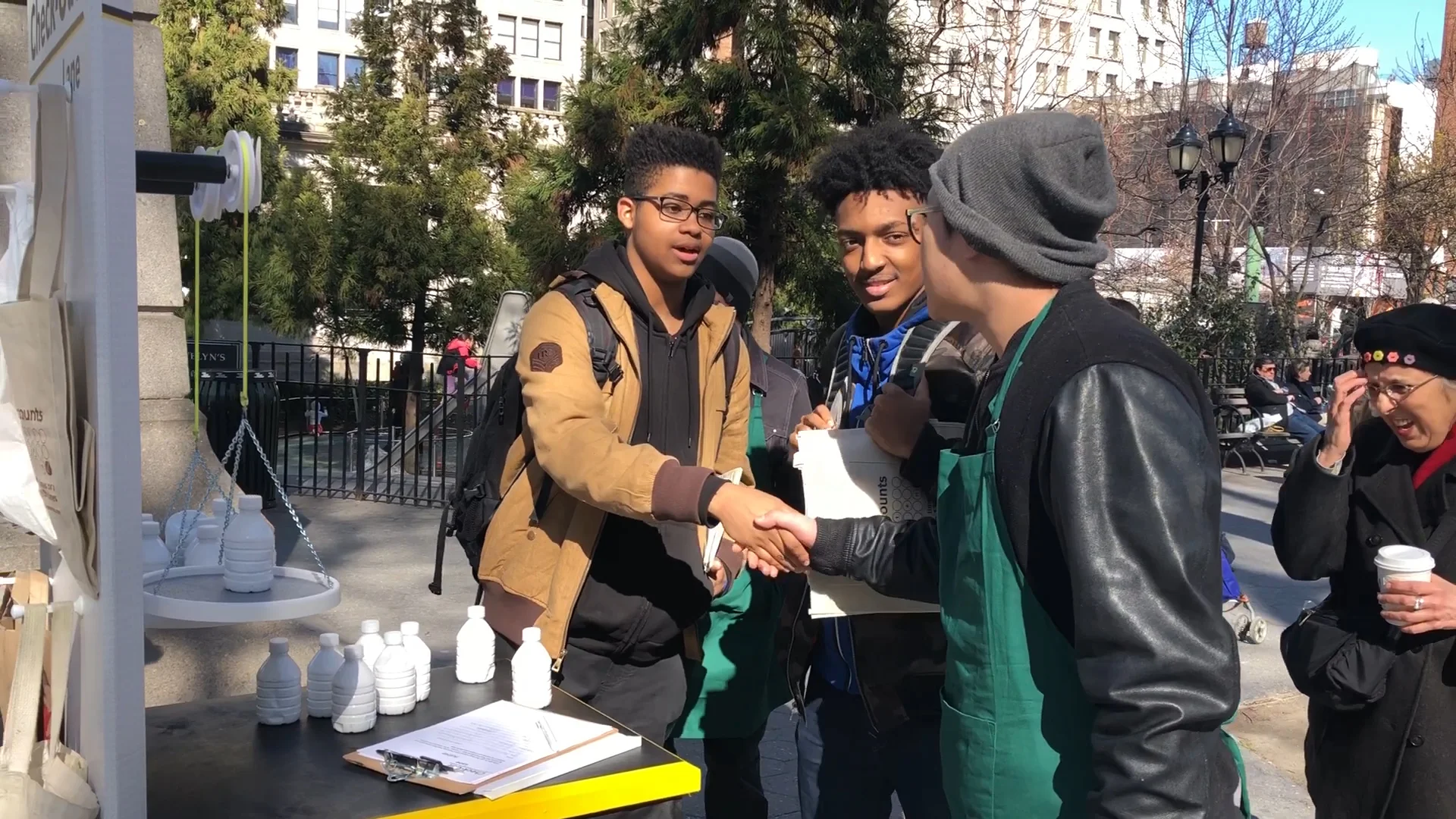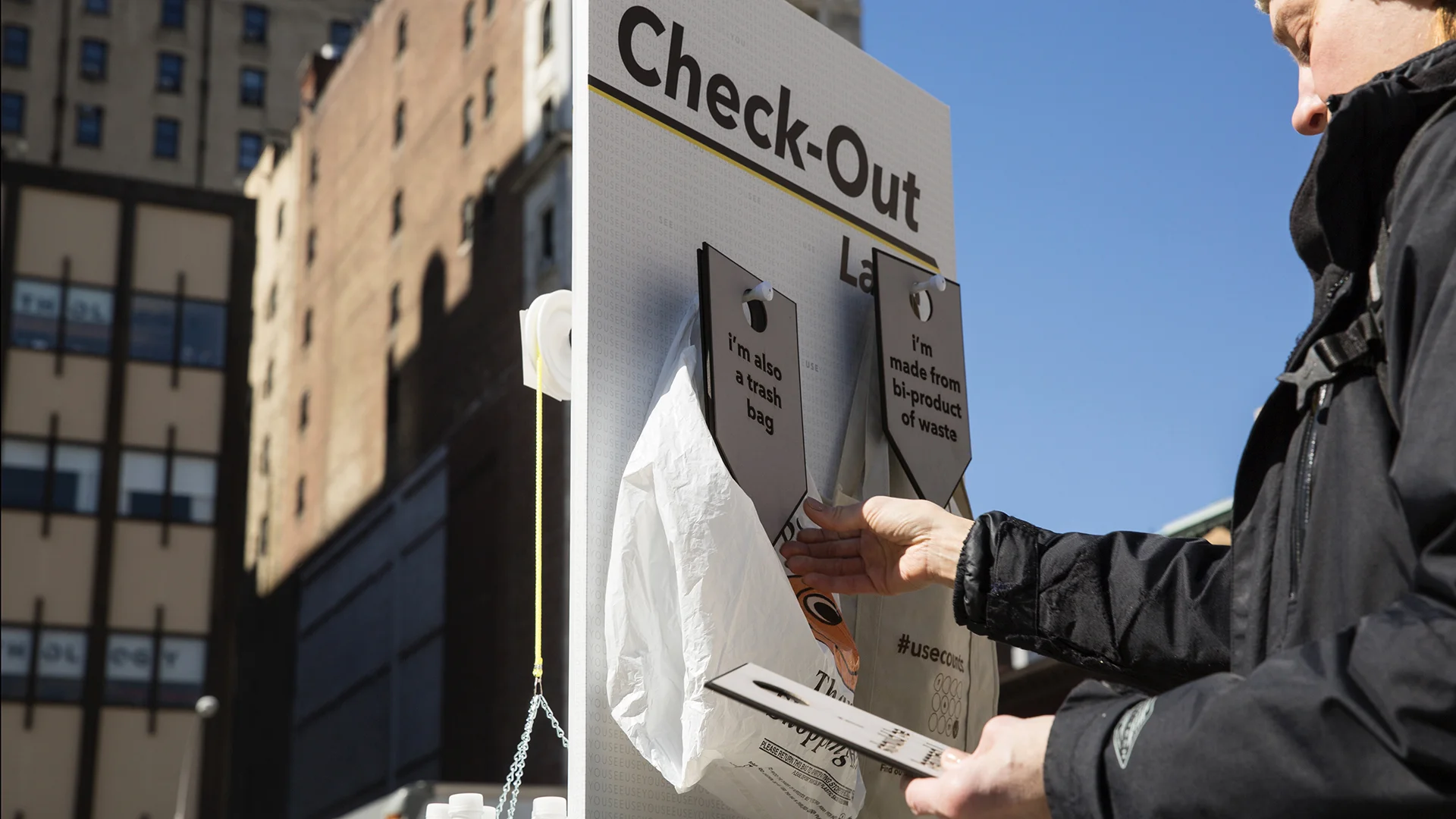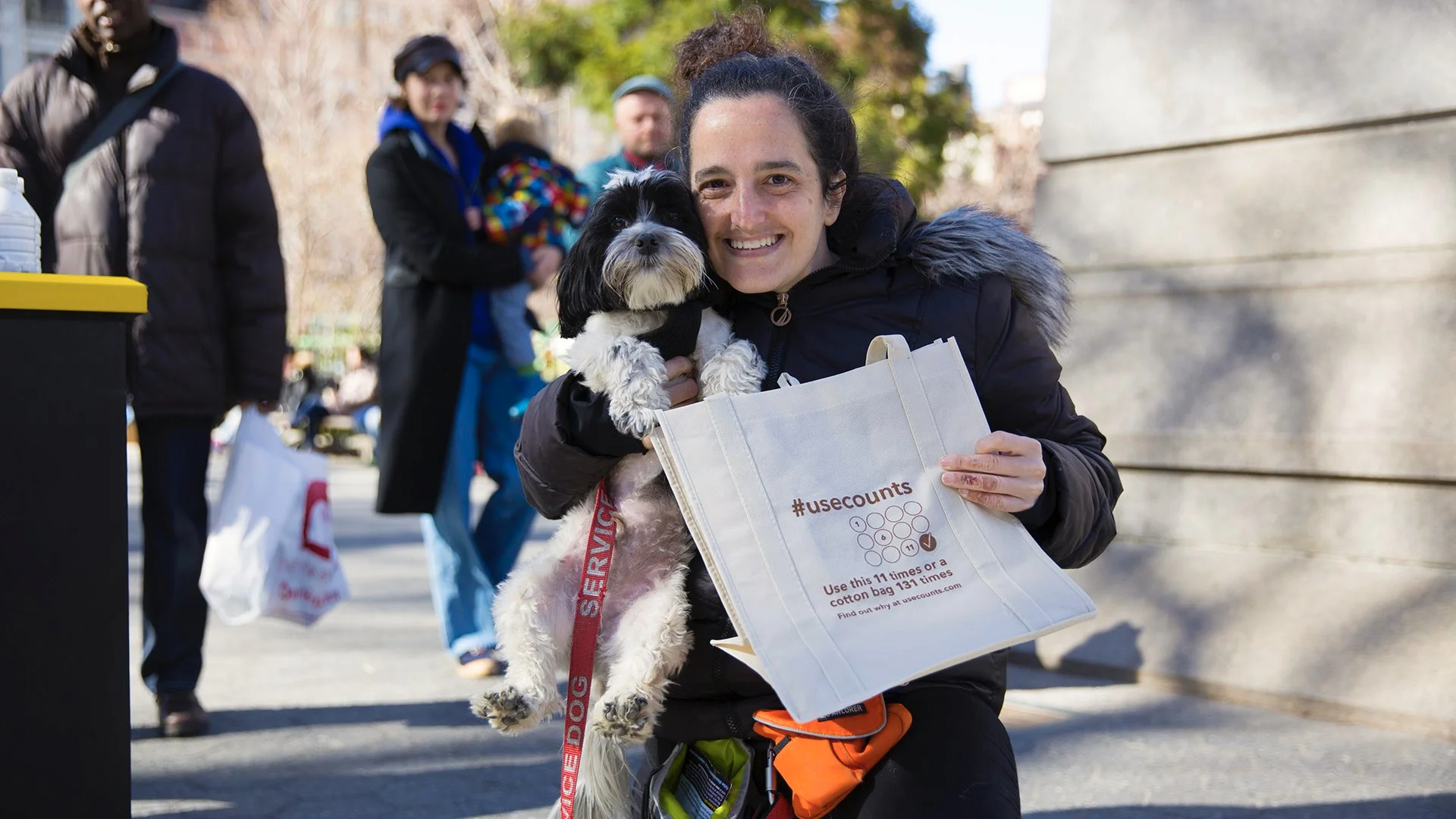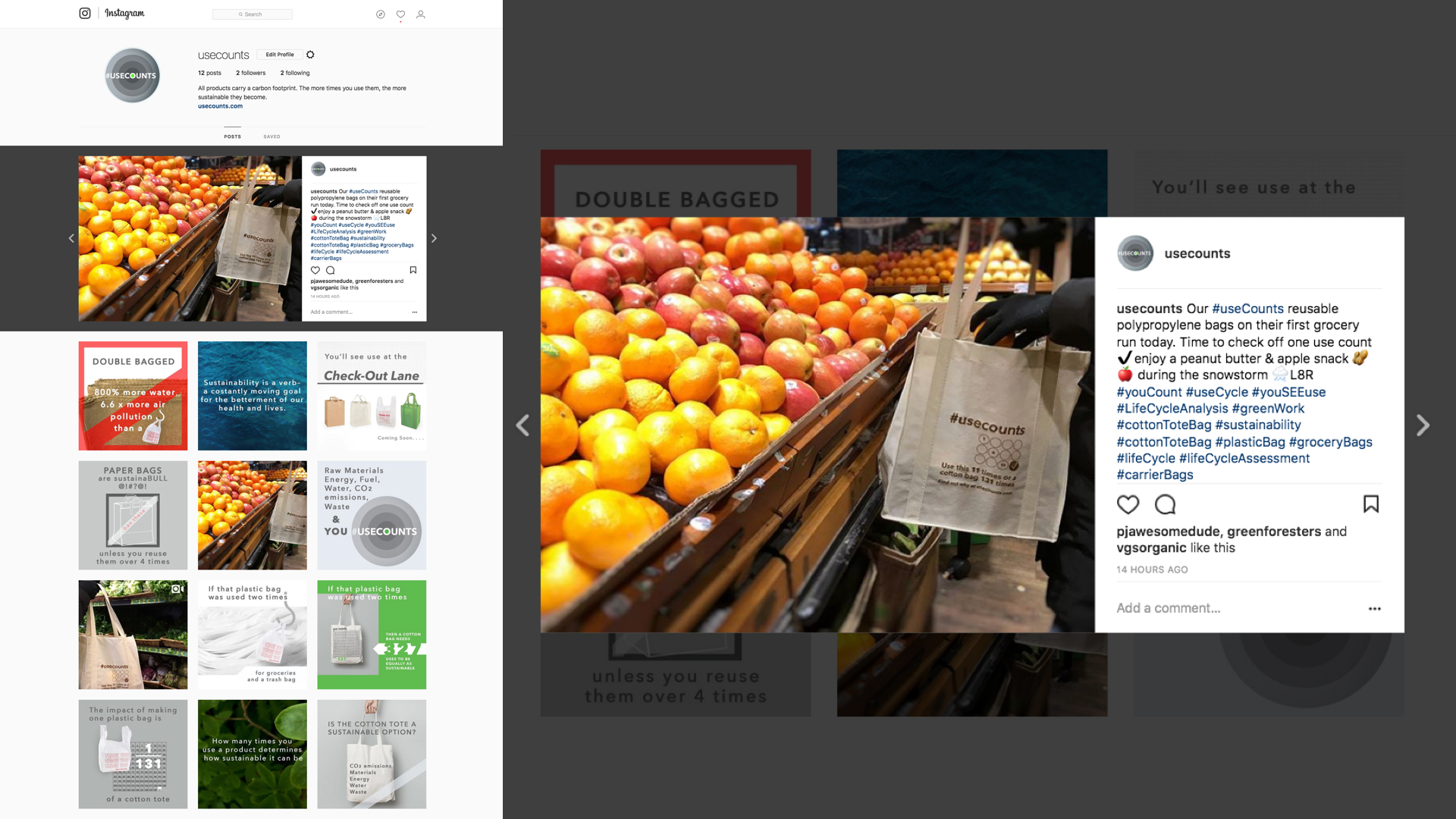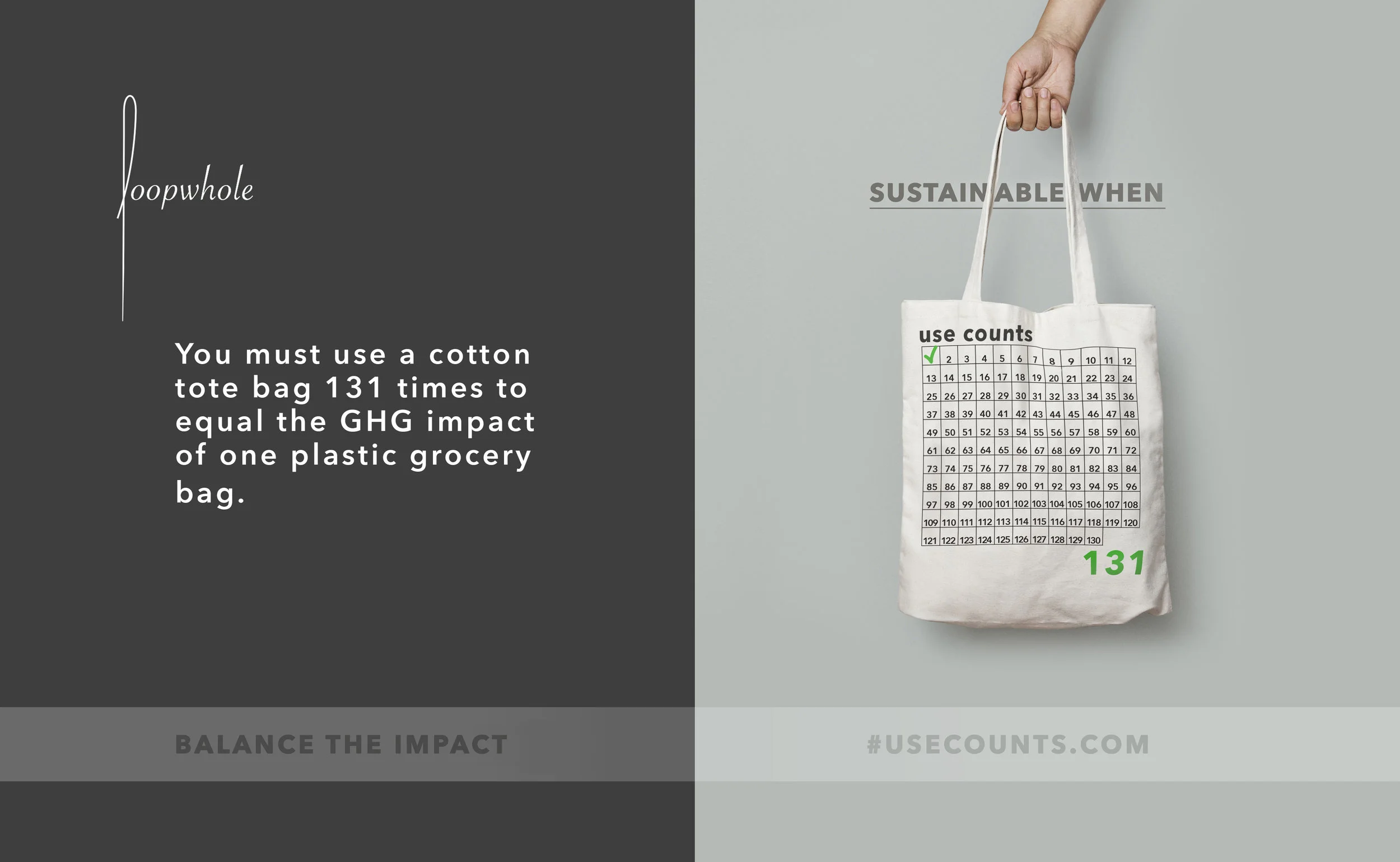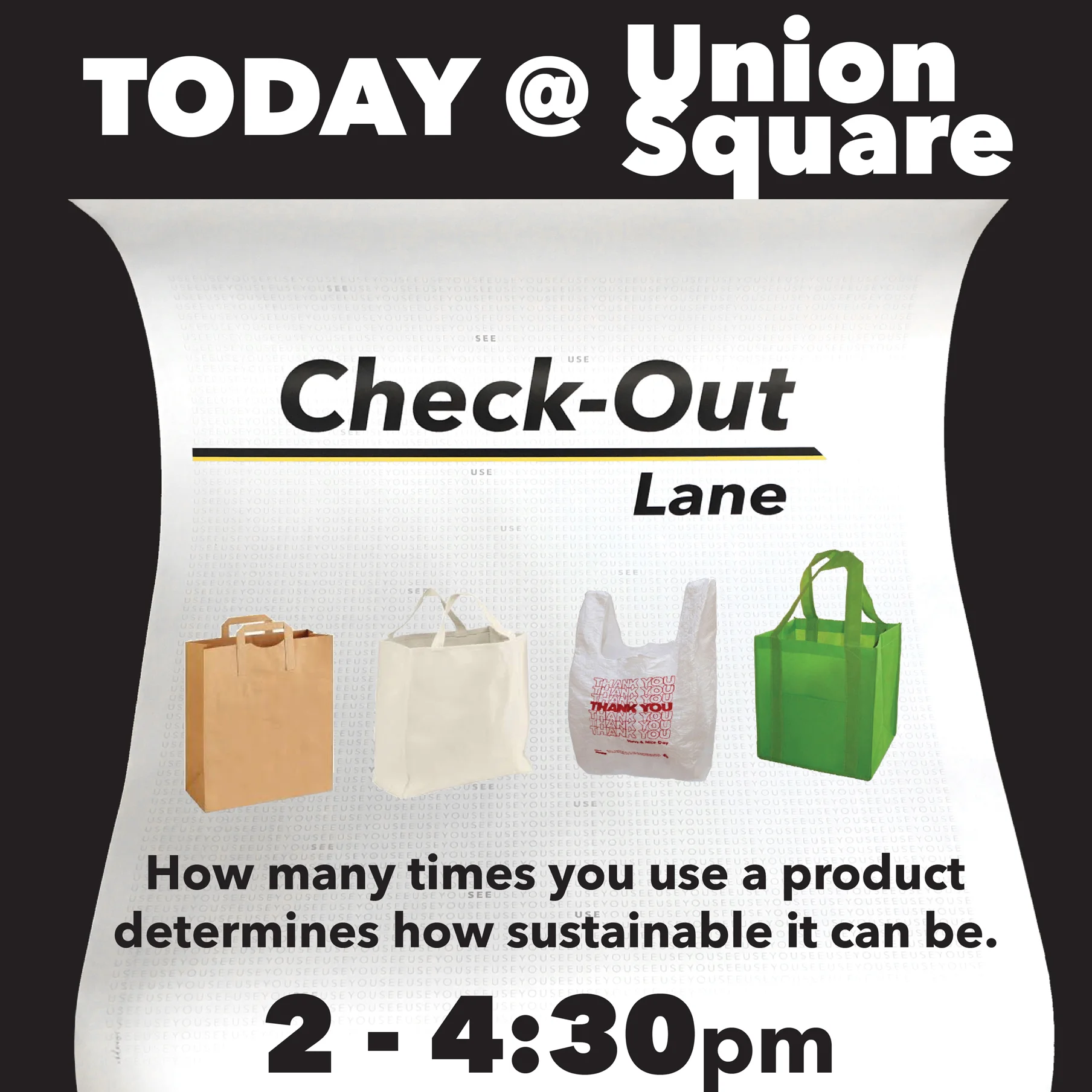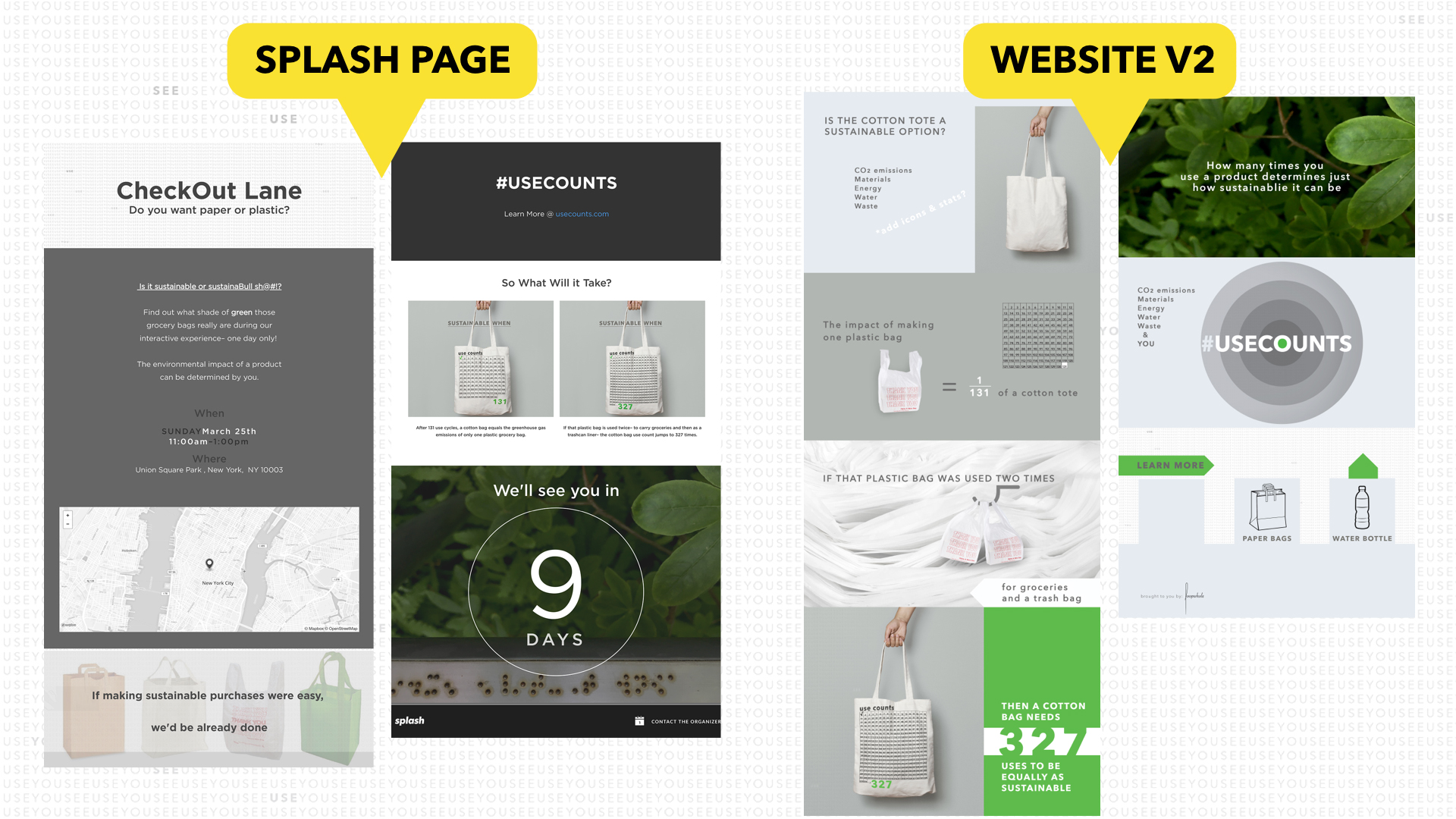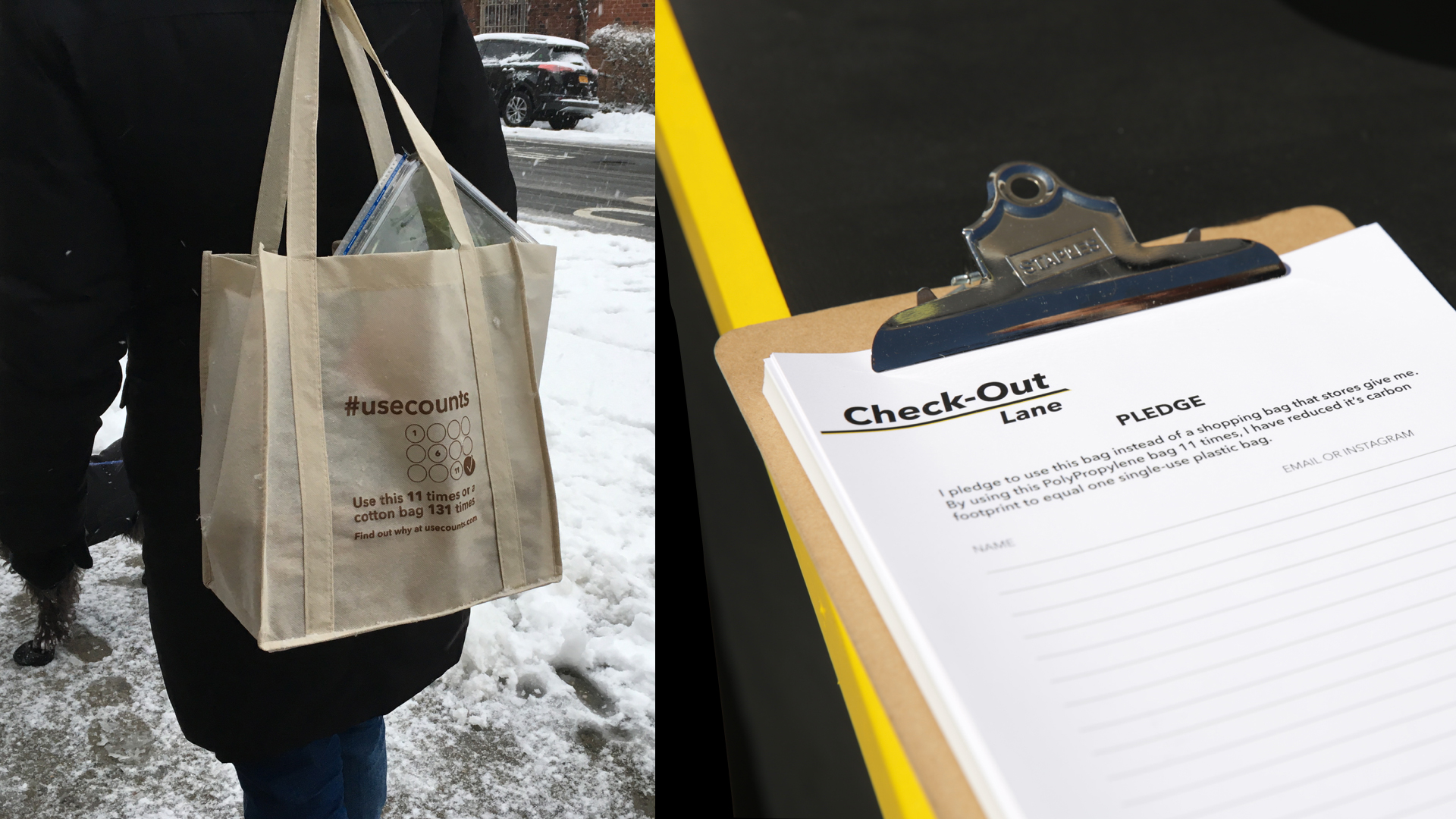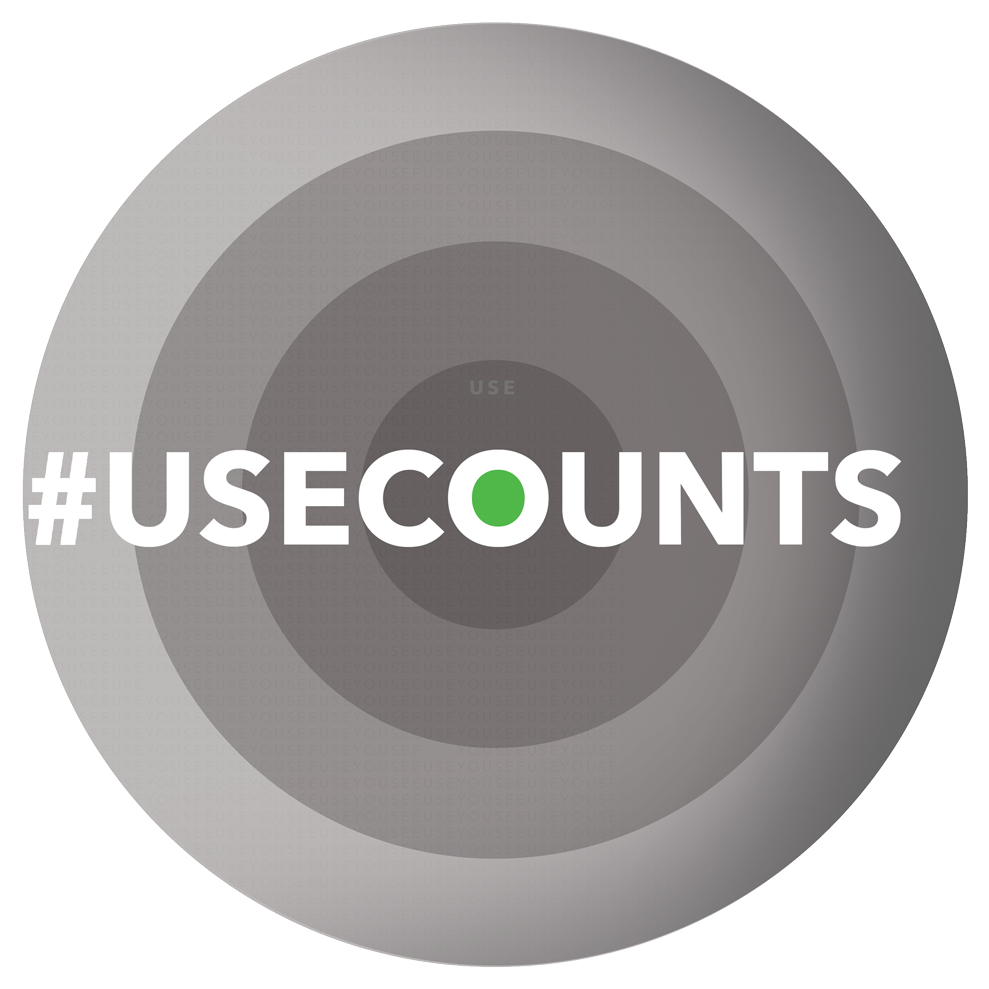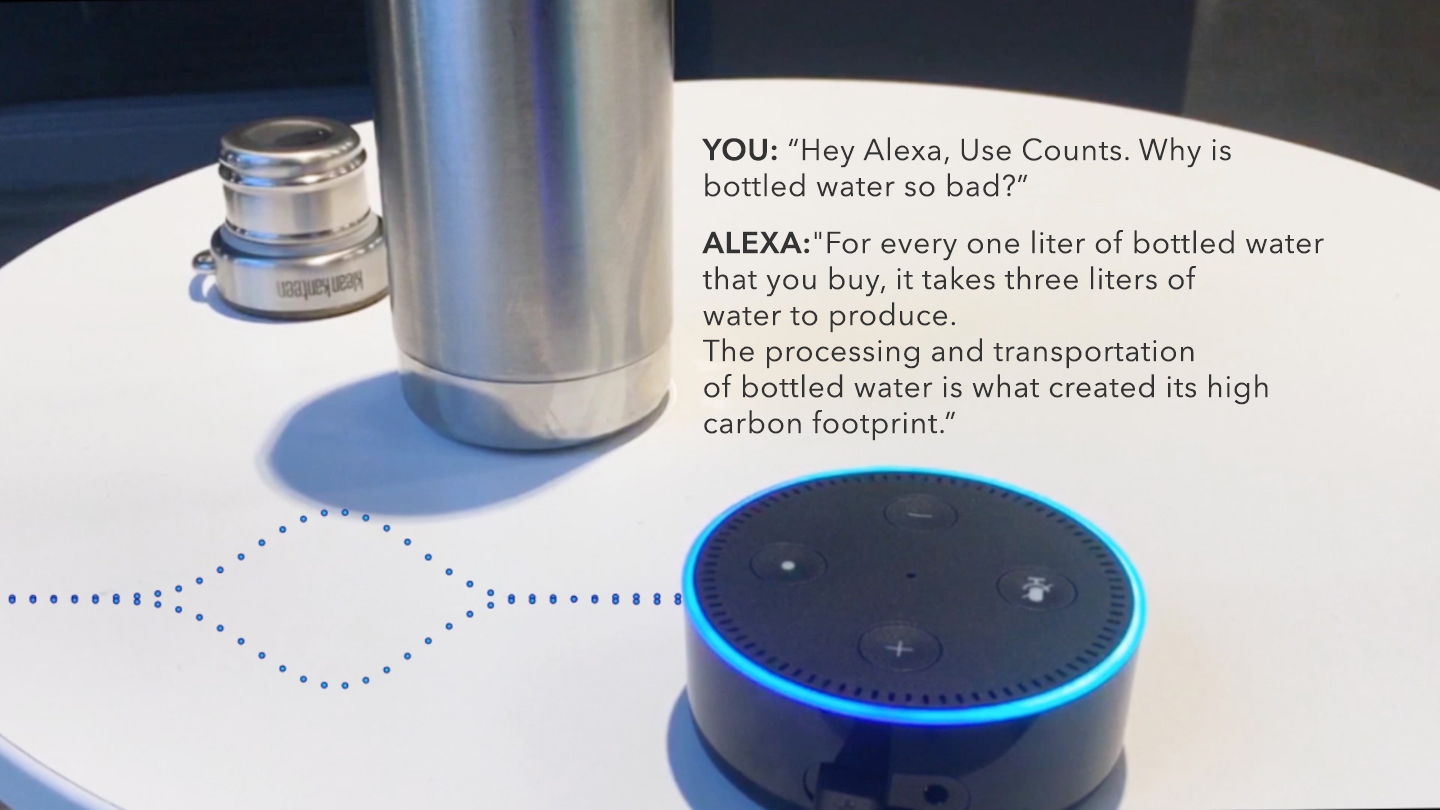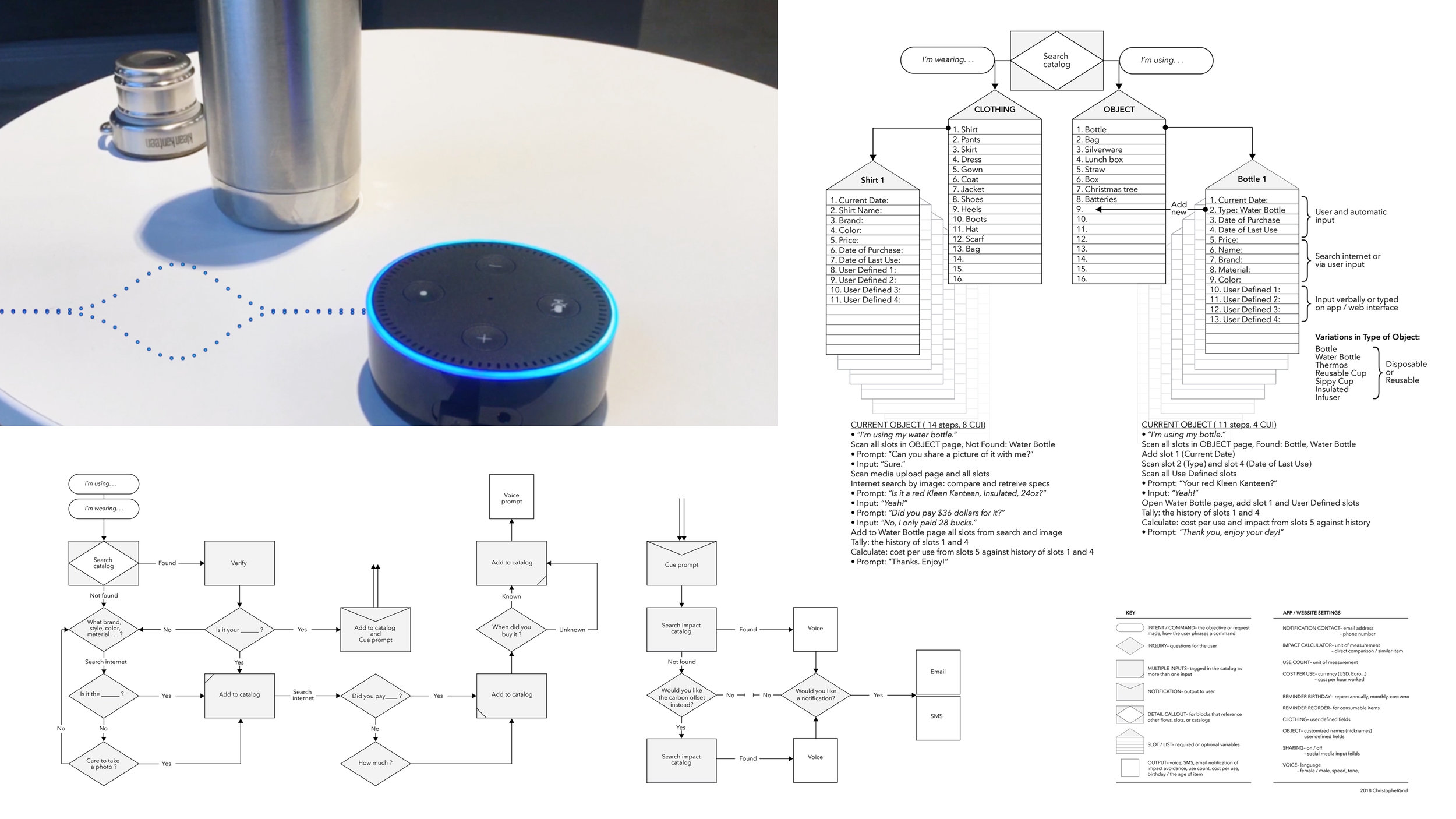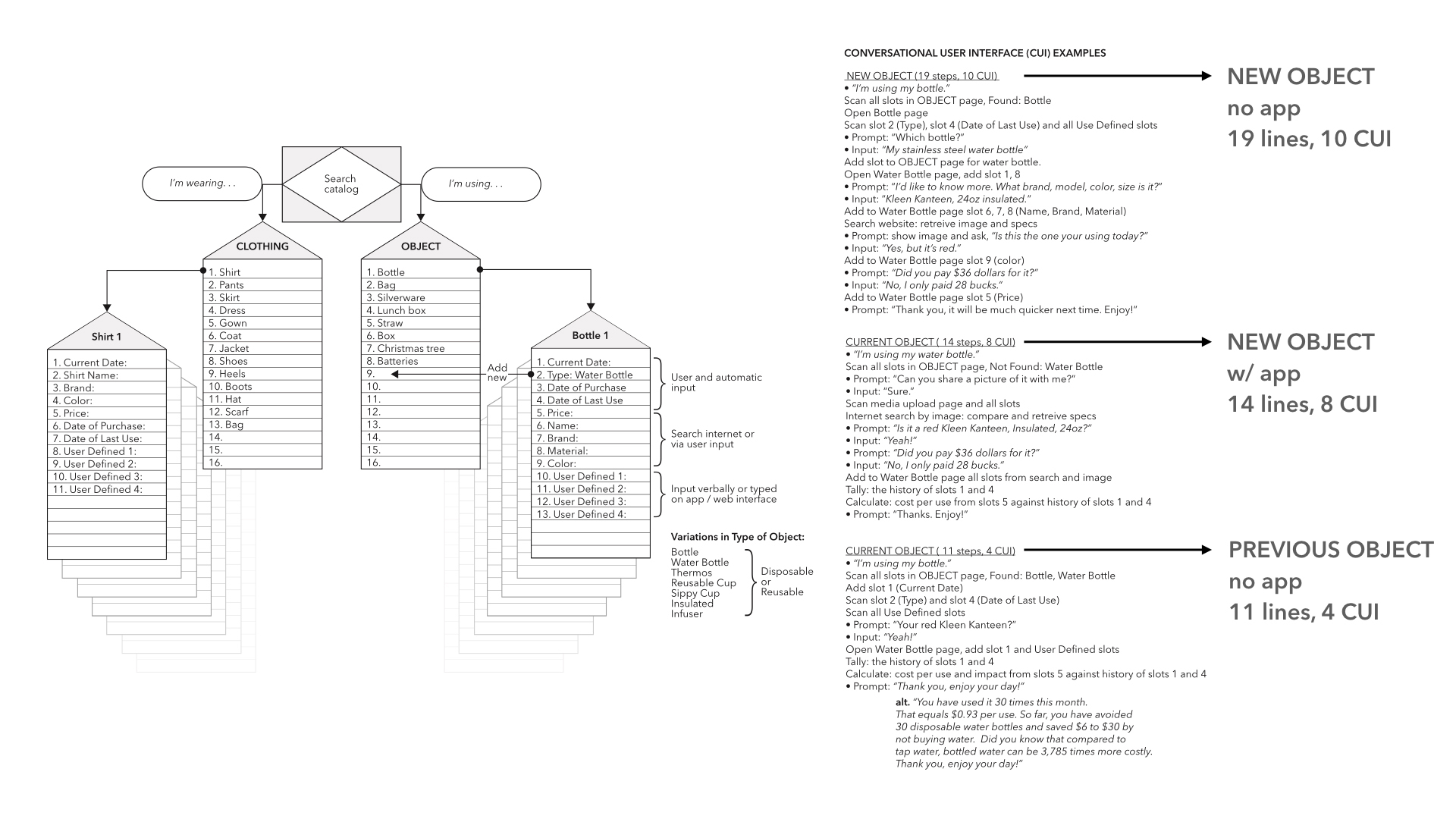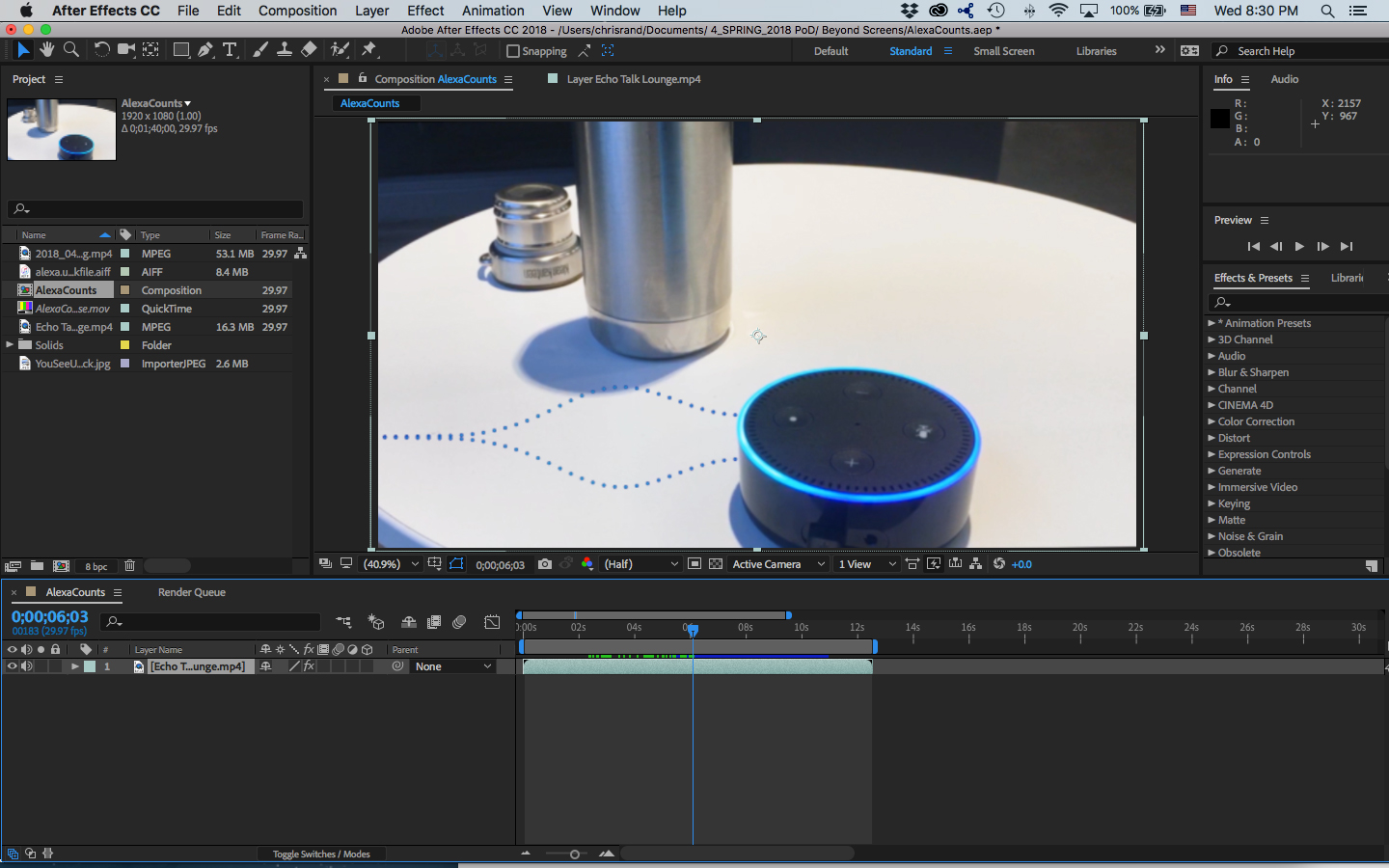UseCounts
Every product we buy has an embedded bio-cost due to the energy and resources consumed in making it. From raw materials, to manufacturing, packaging, and transportation to the retail shelves, a product needs to be used many times in order minimize its negative impact. Ultimately, the sustainability of a product is largely in our control– determined by our habits and use of it.
INTERACTIVE EXPERIENCE :
Check-Out Lane was designed to teach the UseCounts method in a public setting by focusing on shopping bags. This roving, interactive display took 7 weeks to develop and test. It was built in 2 days. Getting out of the studio and into the public realm was essential to test the UseCounts method.
we need to update the message of SUSTAINABILITY with current evidence to reach younger and older audiences alike.
ADvertising :
This design series compares the impact of grocery bags made of plastic, paper, and cotton. Based on existing life-cycle-analysis research, each bag was pitting against one another in a 1 to 1 comparison. The goal was to inform people that even though a plastic grocery bag is widely considered bad for the environement, the fact remains that cotton bags and paper bags are much worse in terms of carbon footprint. How often we use a grocery bag is much more important factor to consider.
BOOK SPREADs :
EVENT PROMOTION :
EVIDENCE / RESEARCH :
The useCounts project is built upon the quantified, scientific research found in Life Cycle Assessments (LCA) from the Environment Agency, Cal Recycle, and the Clemson University– designed to spread the evidence of a products environmental sustainability.
CONVERSATIONAL USER INTERFACE :
A new skill was designed and charted allowing the useCounts method to be included in conversational interfaces like Amazon Alexa. Keeping count of how many times our ceramic mug or stainless canteen is used would be as easy as a verbal prompt.
BUILDING PROCESS :
After a 7 week period of development and testing the concept, I built this roving, interactive display in 2 days– just before the scheduled event in Union Square Park.



